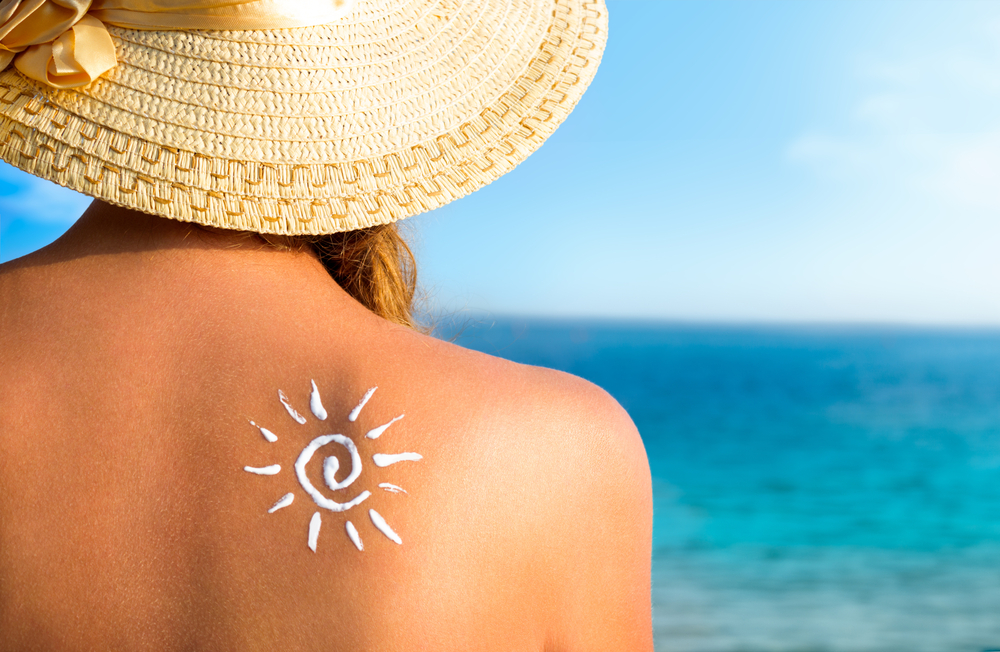Sun lovers beware. We all need protection from the sun’s kiss, but not everyone’s convinced that the sunblocks we’re using are saving our skins.
Bare-shoulder weather is back and as is typical for a Kiwi summer it’s scorching – literally so for the more pigment-challenged among us. Slip, Slop, Slap to the rescue, right? Well, before you slop on that sunscreen, you might want to take a moment to consider whether you’re getting what you paid for from your trusty SPF.
The issues
Some studies have found higher rates of malignant melanoma in sunscreen users than in non-sunscreen users. But experts disagree about whether this is a causational or correlational link. In other words, do sunblock users skew the results by staying out in the sun longer because they’re confident they won’t be burned? Is there a carcinogen in the sunscreen itself? Or is it, as some experts now think, that moisturisers with an added SPF are to blame?
Here are seven common concerns:
1. Potential carcinogenic properties
Some studies show chemical absorbers may be linked to malignant melanoma, the type of cancer responsible for 75 percent of all skin cancer deaths. Some scientists theorise that melanomas are caused by free radicals generated by sunscreen absorption into the skin. However, a recent review of studies including over 9,000 patients, conducted by the American-based Marshfield Medical Research Foundation, concluded there is no association between sunscreen use and an increased risk of malignant melanoma.
2. Nanoparticles
Physical blockers such as titanium- or zinc-based sunscreens can be difficult to apply and leave a thick white film on the skin after application, which many people find unsightly. To counter this, some manufacturers have turned to nanoparticles to create lighter, easier-to-apply creams. This has in turn led to some worries that the smaller-than-small particles could be absorbed into the skin and increase the risk of sun damage. In 2009, the Australian government’s Therapeutic Goods Administration (TGA) reviewed the literature and concluded that the “potential … to cause adverse effects depends primarily upon the ability of the nanoparticles to reach viable skin cells. To date, the current weight of evidence suggests that titanium dioxide and zinc oxide nanoparticles do not reach viable skin cells; rather, they remain on the surface of the skin and in the outer layer of the skin that is composed of non-viable cells.”
The TGA does not require sunscreens using nanoparticles to carry any specific warnings. This is in contrast with the European Union (EU), which only allows titanium dioxide nanoparticles in the belief that the safety of zinc oxide nanoparticles has not been “sufficiently demonstrated”.
Some newer sunblock formulations use non-nanoparticles of titanium dioxide that are still small enough to be rubbed in properly, or use particles coated with silicates to prevent reactions. These formulations will typically be more expensive. Zinc oxide becomes invisible at an average particle size of around 120 nanometres, which is above the nanoparticle size threshold of 100 nanometres. This ‘micro-sized’ zinc oxide is preferred by Snowberry and other brands avoiding nano size particles in their natural sun products.
3. Questionable ingredients
Be wary of ‘anti-ageing’ suncreams that include vitamin A in the form of retinol or retinyl palmitate – an antioxidant commonly used in night creams and lotions. Retinyl palmitate may be fine added to indoor creams, but an American Food and Drug Administration (FDA) study supported the possibility that it may result in cancerous tumours when used on skin exposed to sunlight. The US-based Environmental Working Group, which keeps an eye on sunscreen research and controversy, notes that the FDA results are preliminary, but recommends consumers stay away from sunscreens containing retinyl palmitate.
4. Application matters
Take care when applying your sunblock. Under-application of sunscreen (see fact box for details) combined with incomplete UVA spectrum protection can mean a false sense of security and, consequently, spending more time in the sun than is wise. New EU guidelines to ensure sunscreens have adequate UVA filters go some way to rectifying this, but may disadvantage natural sunscreen brands.
5. Moisturisers and SPF
The problem with moisturisers containing added SPF is twofold. First, because it is a secondary property of the product, certification of the SPF is not required – as it would be when marketed solely as a sun protection product. So your SPF-whatever moisturiser may not offer any UVA protection at all. Second, because few moisturisers are applied in sufficient quantities, the actual sun protection may be much lower than is claimed.
6. Vitamin deficiencies
Vitamin D is essential for bone health, cardiovascular health and calcium absorption, and there are studies showing it suppresses melanoma growth. Vitamin D production in the body is stimulated by exposure to UVB (a type of ultraviolet light) and sunscreen prevents or limits that exposure. Australia has the highest skin cancer rate in the world but, even so, some doctors there recommend some sunscreen-free time outdoors to prevent a deficiency.
7. SPF and the environment
When we think about sun protection, it is not only ourselves we have to take into account. Studies by the Marche Polytechnic University in Italy have shown that commonly used ingredients in many sun protection products kill healthy coral. According to the research team, sunscreens containing parabens, cinnamates, benzophenones and camphor derivatives can contribute to coral bleaching. The researchers estimated the release of sun products onto coral formations around the world each year at between 4,000 and 6,000 tonnes.
The verdict:
The jury is still out on a direct association between potential carcinogenic properties of sunscreens and cancer. If you are concerned about the possible risk for your family, avoid brands with vitamin A in their formulations and stick with those that contain a physical blocker like titanium dioxide or zinc oxide. Nanoparticles appear to pass muster, but opt for the thicker stuff, or the pricier ‘non-nano’ formulations.
Make sure the sunscreen is applied correctly, but don’t overdo it. Letting your skin generate natural vitamin D is preferable to taking a supplement, and may help combat some forms of skin cancer. Ten to 15 minutes of exposure twice a week is all it takes.
There are doctors here who say that in the Southern Hemisphere we get sufficient vitamin D from incidental exposure. Moreover, sunscreen is not a substitute for sun-smart behaviour and should be used in conjunction with proper sun protection, including a hat, t-shirt and adequate shade.
How do sunscreens work?
There are two types of active ingredient: chemical absorbers and physical blockers. Most sunscreens will have one or the other, or a mix of the two.
Common chemical absorbers include cinnamates (octyl methoxycinnamate, octocrylene) and benzophenones (dioxybenzone, oxybenzone, avobenzone), and work by absorbing harmful high-energy UV rays and releasing them as less harmful lower-energy rays. These types of absorbers usually block UVB radiation along with a partial spectrum of UVA rays.
Physical blockers protect against the full spectrum of both UVA and UVB radiation. Cricket-mad Kiwi families will already be familiar with thick white zinc oxide— this and titanium dioxide represent two commonly used types of physical blocker. The New Zealand Dermatological Society calls these blockers the “near ideal sunscreen” because they are inert, safe and protect against the full UV spectrum.
Quick facts on UVA and UVB rays
UVA doesn’t cause sunburn, but penetrates deeper into the skin. It can cause sun-related skin ageing, and can damage DNA.
UVB causes redness and burns, and can also damage DNA. It is linked to skin cancers in animals.
A sunblock’s SPF rating refers to the protection against UVB but not UVA rays.
Crunching the numbers
Sun Protection Factors (SPF) are only accurate when sunscreens are applied in the correct amount. Generally you need about 30ml to cover the whole body. Use half that amount and the protection factor doesn’t just halve, it decreases to the square root of the original factor. Protection from higher SPFs falls more quickly when under-applied, so using half the correct amount of an SPF 70 gives an actual SPF of 8.4. Half the application of SPF 15 gives an actual SPF of 3.9.
European Union guidelines
To ensure proper UVA spectrum protection, the EU introduced a regulation in 2010 requiring sunscreens to have a 1 : 3 ratio for UVA to UVB protection. A regular SPF of 30 would therefore need an SPF of 10 for UVA. The ratio is apparently not difficult to achieve for chemical-based sunscreens, but because of the high UVB protection of titanium dioxide it’s hard to get this ratio in natural sunscreens. For this reason, companies like Dr Hauschka and Weleda have discontinued their sunblock product lines and the New Zealand brand Snowberry has created a 100-percent natural sun protection product that is certified UVA as well as UVB protective, and without the use of nanoparticles.





